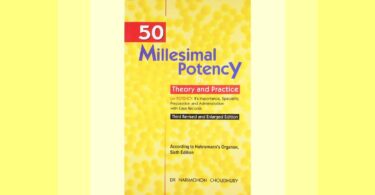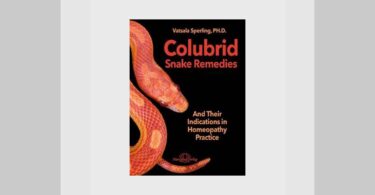Title The System of MAP and Birds in Homeopathy
Authors: Dr. Bhawisha Joshi and Dr. Sachindra Joshi
Publisher: Dr. Sachindra Joshi HUF, Mumbai, India
First edition: 2020, Full color, 634 pages, paperback
Reviewer: Vatsala Sperling

The best thing that happened to me way back in 2012 is that I attended a seminar taught by Dr. Bhawisha and Dr. Sachindra Joshi. Since then, I never missed their US-based seminars and even hopped over to their Canada seminars for a “double dose of the delicious and good stuff.”
I can only say, based on my personal experience, that my practice has seen a positive impact of intense learning from the well known Dynamic Duo of Homeopathy. The Joshi’s have been consistently writing books as well as sharing their latest research findings, expanding the knowledge base of new remedies and their clinical experience of these remedies in their practice.
I have edited one of their books, “Explore Your Inner Human – Animal Connection”, and of course, I use all of their books on a day to day basis in my work. When their latest book, “The system of MAPs and Birds in Homeopathy” arrived on the scene, I quickly made sure to get a copy and, Oh boy, am I enjoying reading this book! Why, oh why, must I read yet another book? My practice is so busy, I have no time to read any more books!” you might say.
Here is why. The entire body of work by the Joshi’s on the topic of birds, and more, is in this one book. There are several ways to read a book. One way is to just dip into where you need to go to by visiting the index. The other is to commit to reading the book seriously and acquiring deep insight and knowledge that you can readily apply in your practice because knowledge – gained systematically, painstakingly and patiently – seeps into your awareness and comes to your aid when you need it the most, i.e. when you are wondering what to prescribe to the patient sitting in front of you.
At the very end of the book, there is a color chart of Avian classification according to levels. The data about the birds begins to pour in from section three of this book. You get to read about bird themes, characteristics, birds of different levels… now, if you are wondering what I mean by birds of different levels, you do have to read on, because, in classifying birds according to levels of human development, the Joshi’s have made a ground-breaking, unique and unparalleled contribution to homeopathy. They have, in other words, paid their dues to Hahnemann.
If you do want to study a systematic zoological classification of birds, pick out birds from which remedies have been made, of course, that is your choice and you can jolly well do that. However, what we really need, from the perspective of what we can apply in our practice, is something that the Joshis have been teaching for some years now and that is the connection between animals and the levels of human development.
A detailed description of this connection is presented in the section one, philosophy of the MAP system, but here, I will simply say, in a nutshell, that the Joshis have created a comprehensive MAP that connects the levels of human development with rows and columns of the periodic table and then they have placed various animals in this same grid.
During case taking, you listen attentively to the expressions of the patient, ask some very simple questions to ascertain (1) base level, (2) predominant level, (3) capacity level and then a few more questions that would explore the nuances about social behavior, solitude, hobbies, color preferences, travel, pace and activity and how they deal with life situations in a day-to-day basis.
Answers to these questions enable you to locate the patient on the periodic table grid, with rows and columns, that reflects levels of human development. Now all that is left to do is refer to the MAP of the animal kingdom and find the animal /bird located at the same place on the grid.
This format of questioning the patient does not put them on the defensive, they relax, calm down, become less nervous about the clinical / office setting, share both their symptoms, their success and their failure in the journey of their life.
It is an indisputable fact that people indeed are located in different levels of development in their life. Matching this level, to the level of birds, or rather any other animal, leads to prescription of a remedy.
In studying this book, I ask you to study the intricacies of the MAP system seriously. It will be helpful to you because the selection of remedies from the birds has a very sound logic to it, and it is based on the MAP system and not the zoological classification of birds.
This whole exercise, research and teaching of over two decades by the Joshis is based on the idea that each human being, each animal, plant and mineral has its own place in the universe, a reason to exist and a contribution to make towards the ecosystem, and hence, each is valuable.
There are three illustrative cases in this book. Each case is a gem, because it is punctuated with comments from the Joshis. Every step of the way, you get to experience how they arrive at a bird remedy, what special pointers and signposts (details scattered throughout the case) have guided them to a choice of a remedy.
Along the way, they have explained the level of the patient emerging in the case and how these levels are matched with a bird remedy. There is a brief follow up that shows the changes the patient has experienced. In my humble opinion, this is how a case should be written.
The cases also have a MAP of the chosen bird remedy and we see how the bird, as plotted in the MAP, is in fact, a mirror image of the level at which the patient lives his life. There you go, the remedy is chosen after all, on the basis of the time-tested law of Homeopathy, “like cures like.”
Birds in nature and their human reflections constitute the bulk of the book and here is the difference in what a homeopath gets from studying the birds and a zoologist gets from a similar endeavor. The human reflections of the birds, MAP and level of each bird included in the book and the homeopathic themes seen in the cases add unquestionable depth and strength to this book and easily make it one of the best books in the subject of bird remedies.
The zoological details about the birds are kept to a minimum – you can easily dig further on the internet and educate yourself if you need to. There are many bird pictures, just to give you a visual cue for the bird you are reading about.
The Joshis are continuously researching and testing out their findings in the real-world crucible of their clinical practice. This book, “The System of MAP and birds in homeopathy” is a glowing testament to the decades of their relentless labor.
Please do not be surprised if you do not find any mention of classical rubrics and repertorization in this book. The groundbreaking path that the Joshis have charted does diverge from the routine, but is indeed based on the principles and laws of classical Homeopathy and gets to a beautiful simillimum that brings the patient a much-desired relief from their suffering – the ultimate aim of our studies and practice.





